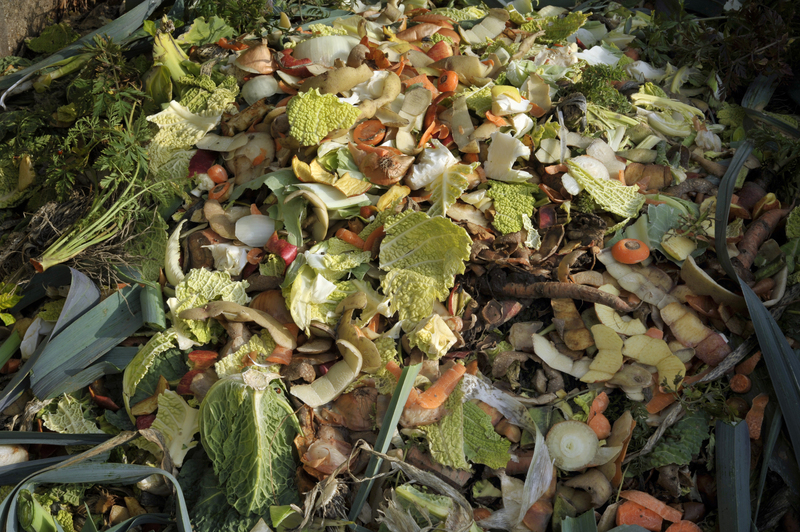Sustainable Methods for Plant Pot Disposal: Eco-Friendly Solutions for Gardeners
Plant pots are a staple for both amateur and professional gardeners alike, enabling healthy plant growth and easy mobility. However, the disposal of old or unwanted plant pots is often an overlooked environmental challenge. Traditional plastic pots, ceramic flowerpots, and even degradable containers contribute to landfill waste unless disposed of sustainably. In this comprehensive guide, we explore various sustainable methods for plant pot disposal, offering actionable advice for eco-conscious gardeners who aspire to minimize their ecological footprint.

Why Is Sustainable Disposal of Plant Pots Important?
Every year, millions of plant pots, especially plastic ones, end up in landfills. These persistent plastics can take centuries to break down, releasing toxins and microplastics that threaten ecosystems. Similarly, ceramic pots are resource-intensive and don't biodegrade easily. By adopting eco-friendly plant pot disposal methods, gardeners not only reduce landfill waste but also support a transition towards a greener planet.
- Plastic waste management: Reducing the buildup of single-use plastics.
- Biodiversity preservation: Preventing toxins and physical debris from entering habitats.
- Resource conservation: Encouraging the reuse and repurposing of materials.
1. Reuse Plant Pots for Sustainable Gardening
The most straightforward option for eco-friendly plant pot disposal is reuse. Before tossing old pots, consider the multiple ways they can still serve a purpose in your garden or around your home.
Creative Ways to Reuse Old Plant Pots
- Seed Starting: Small pots are ideal for germinating seeds prior to transplanting.
- Plant Propagation: Use spare containers to root plant cuttings.
- Organizational Tools: Pots can store garden tools, seed packets, or organize loose items in sheds and garages.
- Garden Art and Decor: Paint, stack or transform them into birdbaths or whimsical yard ornaments.
- Gift Pots: Fill with soil and a small plant to give as eco-friendly gifts to friends and neighbors.
By creatively repurposing plant pots, you extend their lifecycle and avoid unnecessary waste.
2. Participating in Plant Pot Recycling Programs
If reusing is not possible, the next best sustainable plant pot disposal technique is proper recycling. Unfortunately, standard curbside recycling programs seldom accept plant pots due to their unique plastic types and contamination from soil.
Locating Local Plant Pot Recycling Options
- Garden Centers and Nurseries: Many large gardening retailers offer take-back or recycling bins specifically for plastic plant pots and trays.
- Community Collection Events: Some municipalities organize periodic recycling events focused on plastic horticultural containers.
- Specialized Recycling Facilities: Search for recycling centers in your area equipped to handle #5 polypropylene or #2 HDPE, the common plastics found in plant pots.
Always clean your plant pots before recycling to remove dirt and roots, as contamination can hinder the recycling process. Remember to check the recycling symbol on your pots and consult with your local facility regarding accepted types.
3. Composting Biodegradable Plant Pots
Compostable plant pots--made from materials like coir, peat, paper, or cow manure--are a rising sustainable alternative. When these pots reach the end of their life, they can be effectively broken down in a home compost pile or municipal composting facility.
Benefits of Using and Composting Biodegradable Pots
- Zero-waste gardening: Pots break down into organic matter, feeding your soil.
- Root health: Plants can be planted with the pot directly into the ground, reducing transplant shock.
- Resource efficiency: Less reliance on petroleum-based products.
To compost such eco-friendly plant pots, simply break them into smaller pieces and add to your compost heap. Make sure they are not treated with chemicals or coated in plastic, as this hinders biodegradation.
4. Donating Your Used Plant Pots
Donating is a fantastic method for sustainable plant pot management. Many schools, community gardens, youth clubs, and nonprofits need extra containers for their gardening projects.
Where to Donate Used Plant Pots
- Local schools: Support education by providing pots for science classes or school gardens.
- Community gardens: Help urban greening projects that often run with limited resources.
- Horticultural societies: Enable plant sales, fairs, and seed swaps by donating containers.
- Online platforms: Websites like Freecycle, Craigslist, or local Facebook groups are excellent places to give away unwanted pots.
Ensure donated pots are clean and empty, making them suitable for immediate reuse.
5. Upcycling Plant Pots: Unleashing Creative Potential
Upcycling, the art of transforming waste materials into products of greater value, is another responsible plant pot disposal strategy. Old plant containers can be converted into:
- Outdoor lanterns: Insert candles or LED lights through drilled holes.
- Vertical gardens: Mount pots on walls or fences for lush green displays.
- Herb organizers: Label and use multiple small pots for culinary herbs in the kitchen.
- Desk organizers: Brightly painted pots make for excellent pen and stationery holders.
- Pet shelters: Large, sturdy pots can serve as animal homes in the garden.
Such upcycling projects provide lasting value and reduce the need for new products, embracing the circular economy principle.
6. Avoiding Plant Pots Made from Non-Recyclable Materials
Another critical consideration in sustainable plant pot disposal is making upfront choices about the materials you buy. Some plant pots contain composite materials, glazes, or PVC that are nearly impossible to recycle or compost. To minimize waste:
- Choose recyclable plastics: Look for pots labeled with #2 or #5 plastics, which are more widely accepted by recycling facilities.
- Select biodegradable options: Consider pots made from plant fibers, wood, or other natural materials for easier composting.
- Avoid painted or glazed ceramics: These are often not accepted in recycling streams and may leach chemicals into the soil.
Making sustainable purchasing decisions greatly influences long-term environmental impact.
7. Sustainable Plant Pot Alternatives
Focusing on sustainable disposal should go hand in hand with choosing sustainable materials from the start. Opting for alternatives to plastic and glazed ceramic ensures an easier end-of-life process.
Innovative Eco-Friendly Plant Pot Materials
- Bamboo fiber pots: Biodegradable and made from renewable resources.
- Rice husk containers: Durable yet compostable, suitable for indoor and outdoor use.
- Coir pots: Made from coconut fiber, these are fully plantable and break down naturally.
- Pots from recycled plastics: Reduces demand for virgin plastic and supports recycling industries.
- Clay or terracotta (unglazed): Though not biodegradable, these are reusable and made from natural materials.
Choosing such materials ensures your plant pot disposal process remains eco-friendly and aligns with broader sustainability goals.
8. Proper Disposal of Broken or Damaged Pots
Accidents happen--ceramic, terracotta, and plastic pots can break. Instead of tossing shards into trash, consider more sustainable plant pot disposal methods:
How to Reuse Broken Clay and Terracotta Pieces
- Potsherds for drainage: Place broken pieces at the bottom of new pots to enhance drainage and prevent soil loss.
- Mulch for paths and beds: Crushed ceramics can be used in pathways or as decorative mulch in gardens.
- Mosaic art: Use fragments to create beautiful garden stepping stones, plaques, or table tops.
For broken plastic containers, check if your local recycling facility accepts rigid plastics in damaged states. If not recyclable, consider using shattered plastic as drainage fill in large planters to avoid sending it immediately to landfill.
9. Advocating for Change: Encouraging Manufacturer Responsibility
While individual actions matter, sustainable plant pot disposal is also driven by producer responsibility. Encourage nurseries and manufacturers to adopt take-back programs and use recycled or biodegradable materials.
- Support brands: Purchase from companies with green policies and transparent materials sourcing.
- Advocate locally: Request your favorite garden centers to participate in recycling initiatives or offer pot exchange schemes.
- Spread awareness: Educate fellow gardeners on proper eco-conscious plant pot disposal practices.
By making your voice heard, you can accelerate the gardening industry's shift towards sustainability and circularity.

Conclusion: Plant Pot Disposal & Sustainable Gardening
Sustainable methods for plant pot disposal are essential to minimize gardening's environmental impact and foster a healthier planet. By focusing on reuse, recycling, composting, donation, upcycling, and conscious material choices, gardeners can significantly reduce both household and community waste.
- Always reuse or repurpose before recycling or disposal.
- Participate in specialized plant pot recycling schemes.
- Compost biodegradable pots and avoid non-recyclable materials.
- Donate usable pots to schools, gardens, and local initiatives.
- Advocate for responsible manufacturing and participate in take-back programs when available.
Embracing sustainable plant pot disposal practices is not only an eco-friendly choice but also a way to inspire others within your community to garden more consciously. Let us work together to ensure that every pot, however humble, stands as a testament to our commitment to the earth.
Frequently Asked Questions about Sustainable Plant Pot Disposal
- Can old plastic plant pots go in my blue bin?
Most municipal recycling programs do not accept plant pots in curbside bins. Check with local garden centers or specialized facilities for recycling options. - Are compostable pots safe for all compost systems?
Ensure they are free from chemicals and coatings before adding to compost. Some municipal facilities accept them; home composting may vary based on material and conditions. - How can I tell if my pot is recyclable?
Look for recycling symbols (#2 or #5) on the bottom of plastic pots, and consult local guidelines. - What should I do with broken ceramic pots?
Use the shards for drainage in other pots, as mulch, or in mosaic DIY projects.
Start Your Eco-Friendly Plant Pot Journey Today!
Every step toward sustainable plant pot disposal counts. As you plan your next gardening project, make responsible choices for plant containers, encourage others in your community to do the same, and watch as your efforts blossom into positive environmental impact!